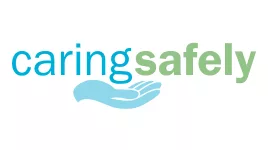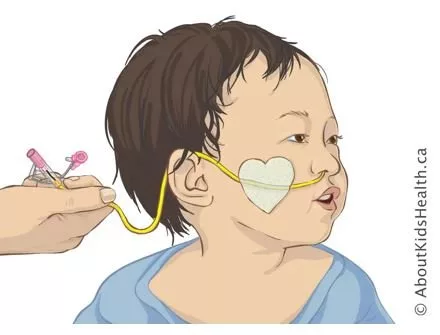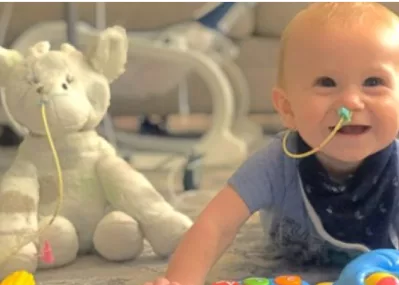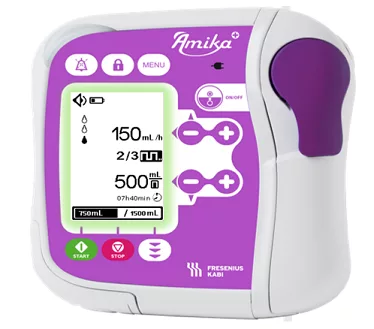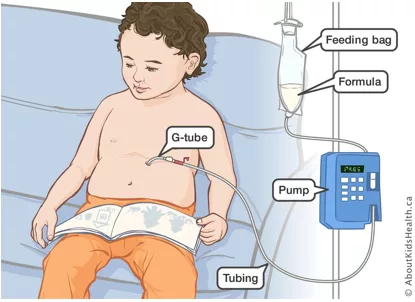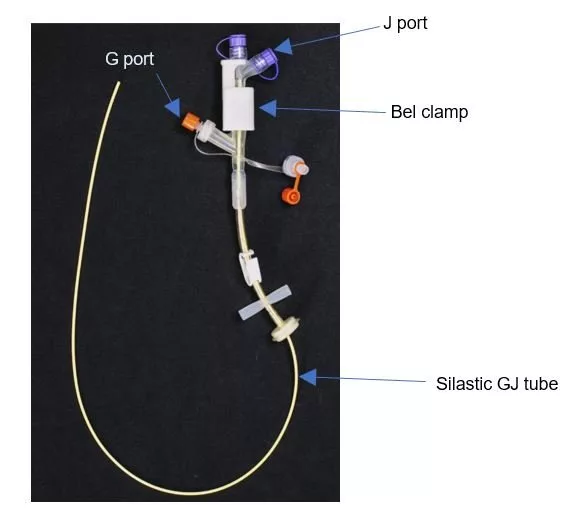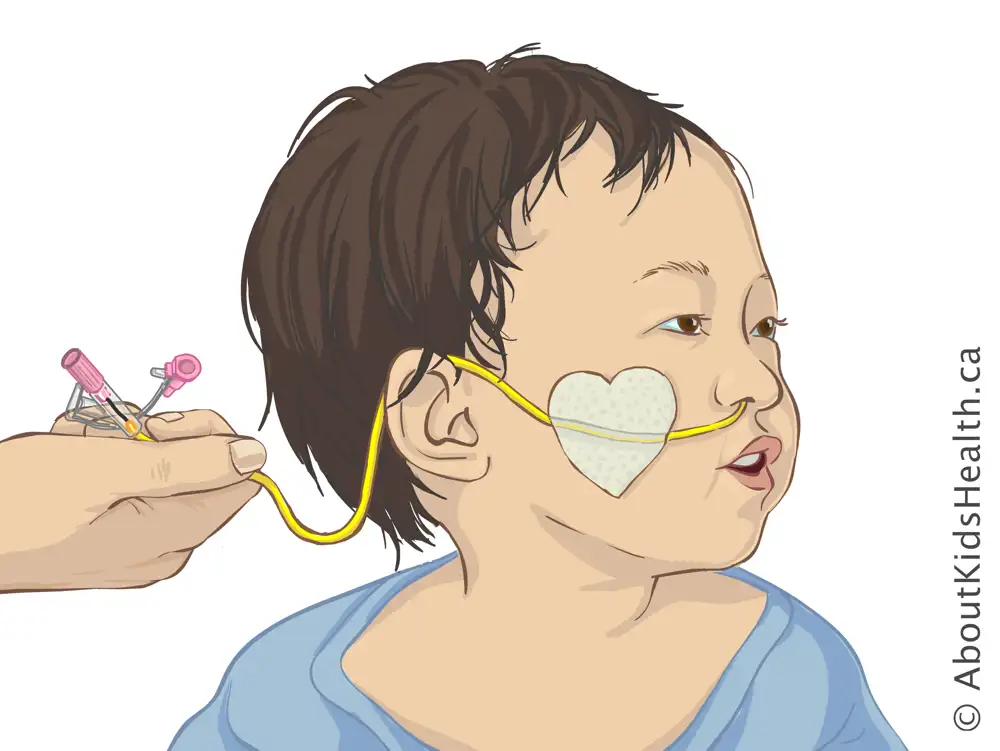SITUATION:
This QuickHit was developed to share information about the Avanos MIC PEG tube which is a gastrostomy tube (G tube) that temporarily replaced the Corflo PEG for primary G tube insertions at SickKids due to a backorder.
BACKGROUND:
Many children with medical complexity rely on enteral feeding tubes to support nutrition, hydration and/or medication administration. At SickKids, the Corflo PEG is the tube of choice for primary G tube insertions. Due to recent supply chain challenges, there was a temporary backorder of Corflo PEG tubes which has now resolved. During that time, the MIC PEG tube was inserted in replacement of the Corflo PEG for primary G tube insertions.
The MIC PEG tube is a type of G tube that has the following components:
- Round bolster: Placed on the inside of the stomach and helps prevent the tube from being pulled out.
- Disc: Placed outside of the stomach and helps prevent the tube from moving into the stomach.
- Clamp: When closed, it prevents backflow of stomach contents when the tube is not in use. When open, it allows fluids to flow through the tube.
- Y-adaptor: Allows access for tube feeding, fluids, medication and blended diet administration. It can be changed if needed.
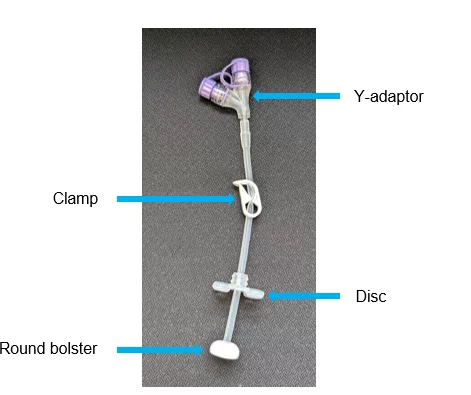
ASSESSMENT:
The MIC PEG tube has several similarities to the Corflo PEG tube including:
- Material: Both tubes are made of silicone.
- Insertion technique: Inserted using a “pull through” technique by an interventional radiologist under general anesthesia.
- Internal securement: Both tubes are secured internally with a bolster.
- External securement: The MIC PEG tube has a small disc whereas the Corflo PEG has a crossbar.
- Components: Both tubes have internal/external securement, clamp and removable Y-adaptor.
The key difference between the MIC PEG and Corflo PEG tubes are the available sizes. The MIC PEG tube is available in the size 14 French (Fr). The Corflo PEG tube is available in 12 Fr and 16 Fr sizes.
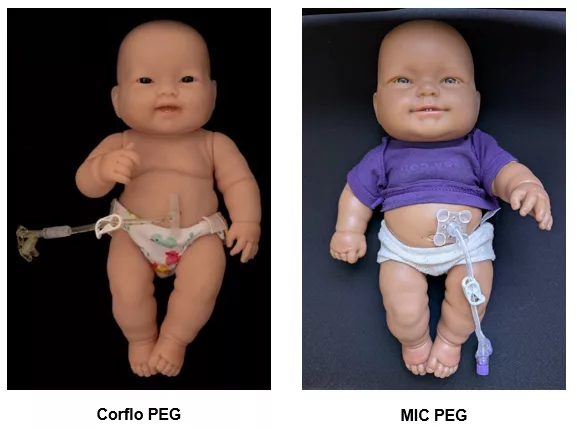
RECOMMENDATION:
Connected Care recommends the following when caring for children with the MIC PEG tube in home and community:
- Confirm the child’s type and size of G tube, date of insertion and what service inserted the tube (interventional radiology or general surgery).
- Ensure the child has a fully assembled emergency dislodgement kit with them at all times. The emergency dislodgement kit for a MIC PEG tube will include a Foley catheter that is the same size of the tube (14 Fr) and one size smaller than the tube (12 Fr).
- Wash the stoma with soap and water daily, beginning 24 hours after the tube is inserted. The child may begin to take baths 48 hours after tube insertion.
- Consider securing the tube to the abdomen with tape to prevent excess pressure on the stoma and/or accidental dislodgement (see image below). Rotate where the tube is taped daily as the weight of the tube may lead to stoma issues if it is always in the same position.
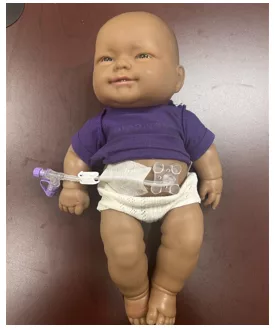
- Ensure the disc remains snug to the child’s stoma. For the first two weeks after insertion, do not adjust the disc. After two weeks, the disc can be adjusted at home.
- If broken, cracked or leaking, the Y-adaptor attached at the end of the tube can be changed as needed.
- Monitor for any tube and/or stoma issues. For questions about the MIC PEG tube and/or non-urgent issues, contact the child’s G tube specialist during business hours or Connected Care Live afterhours, weekends and holidays.

